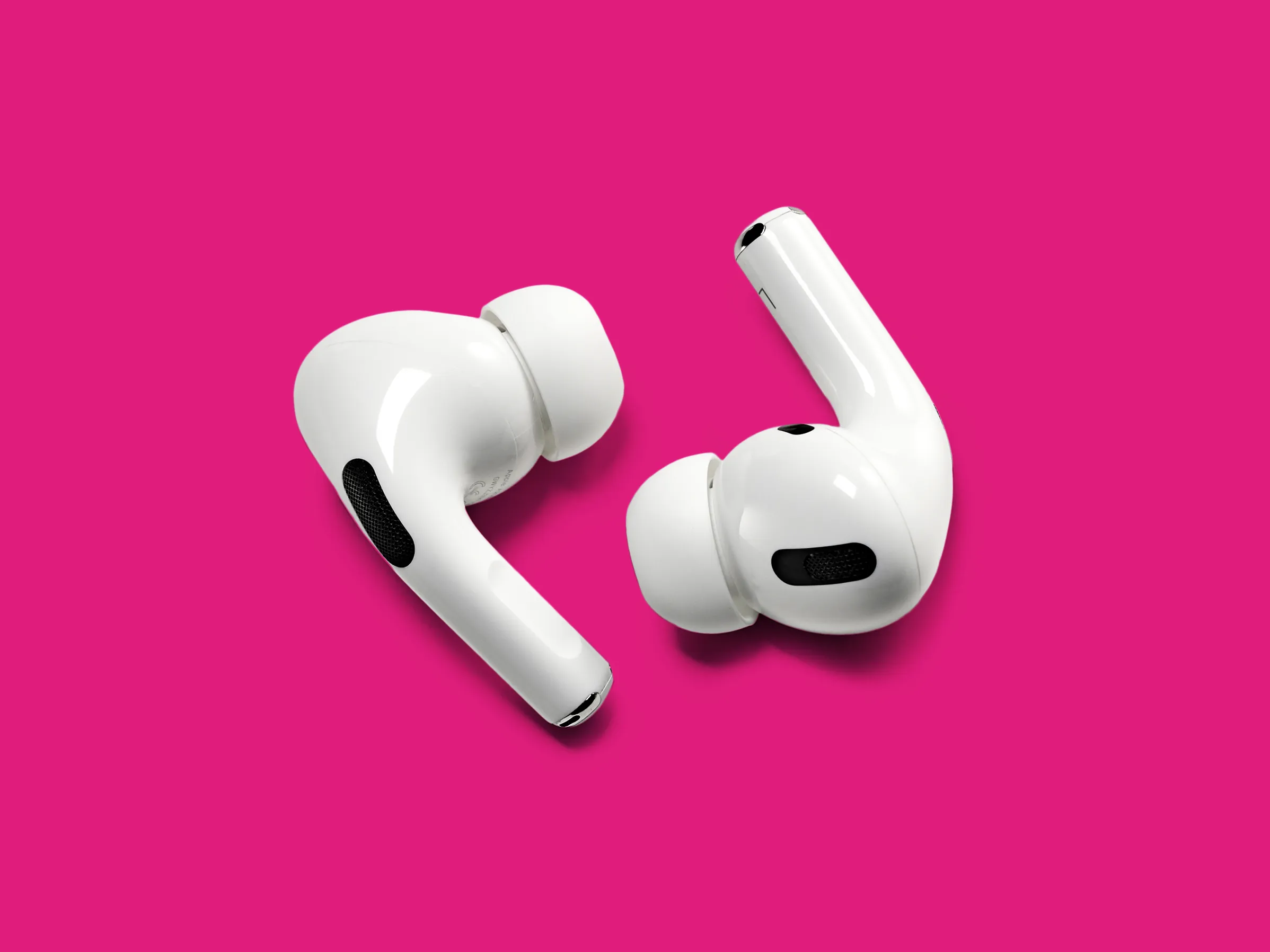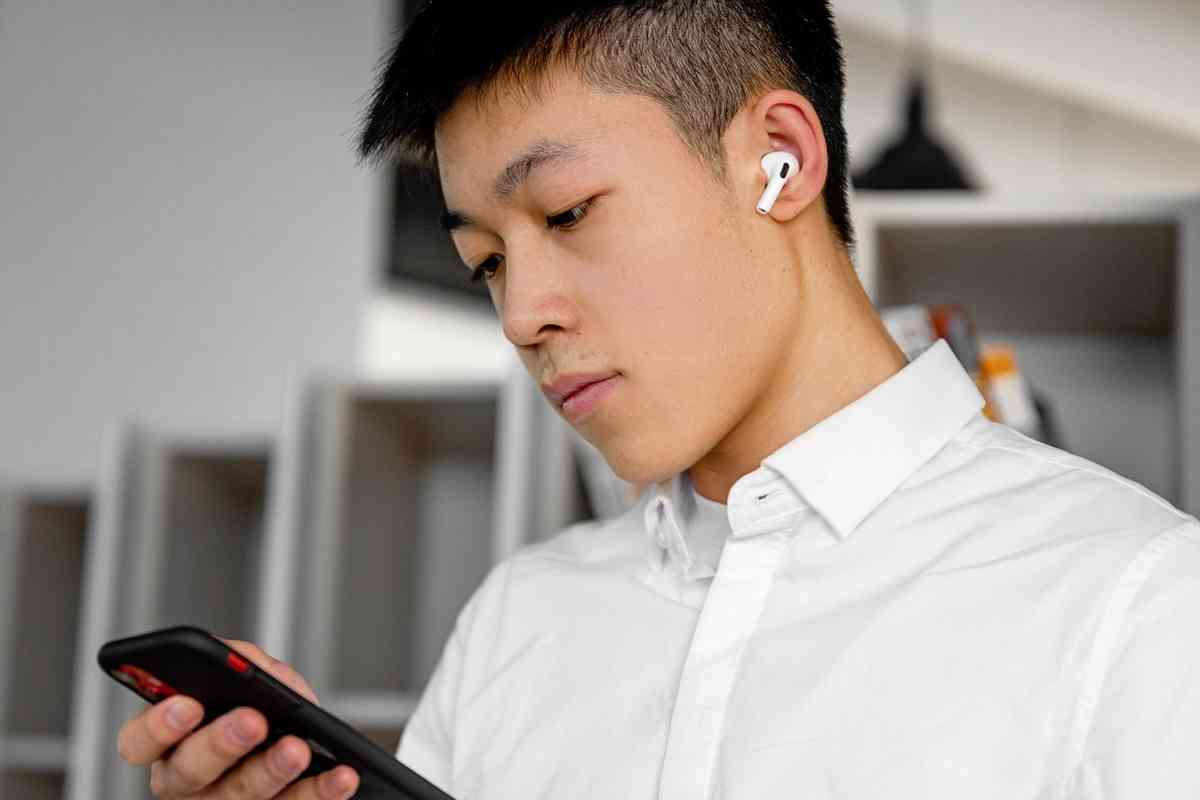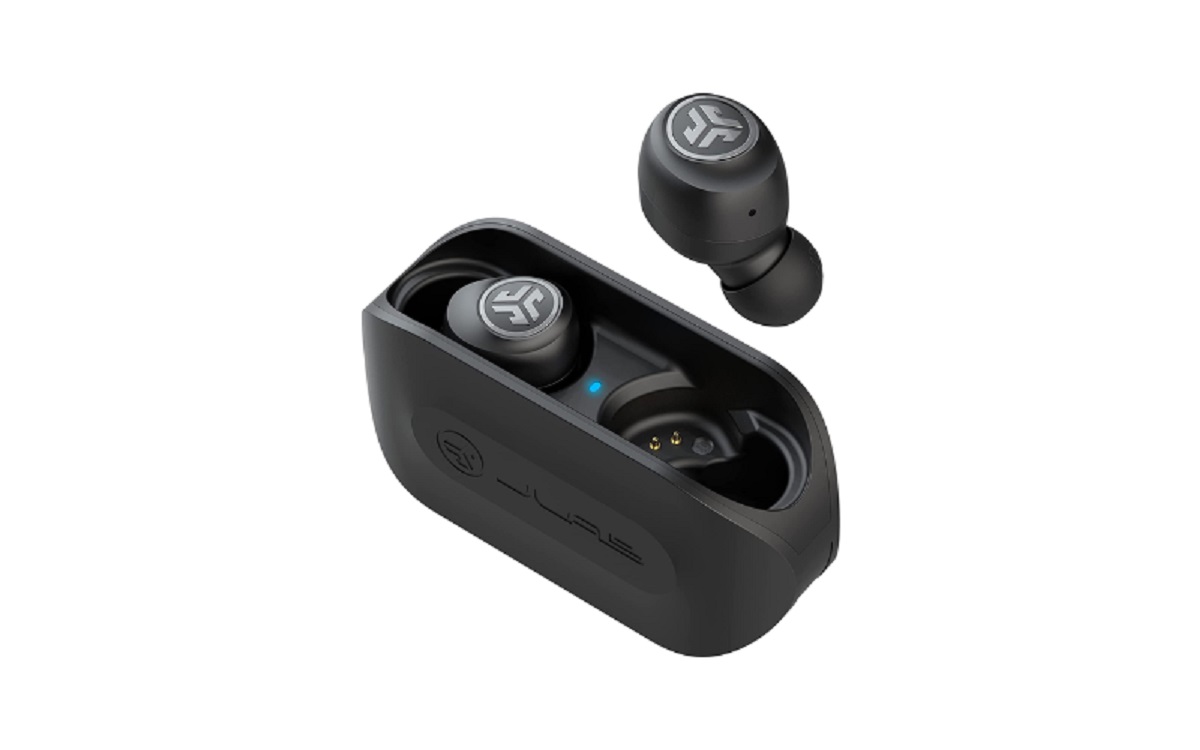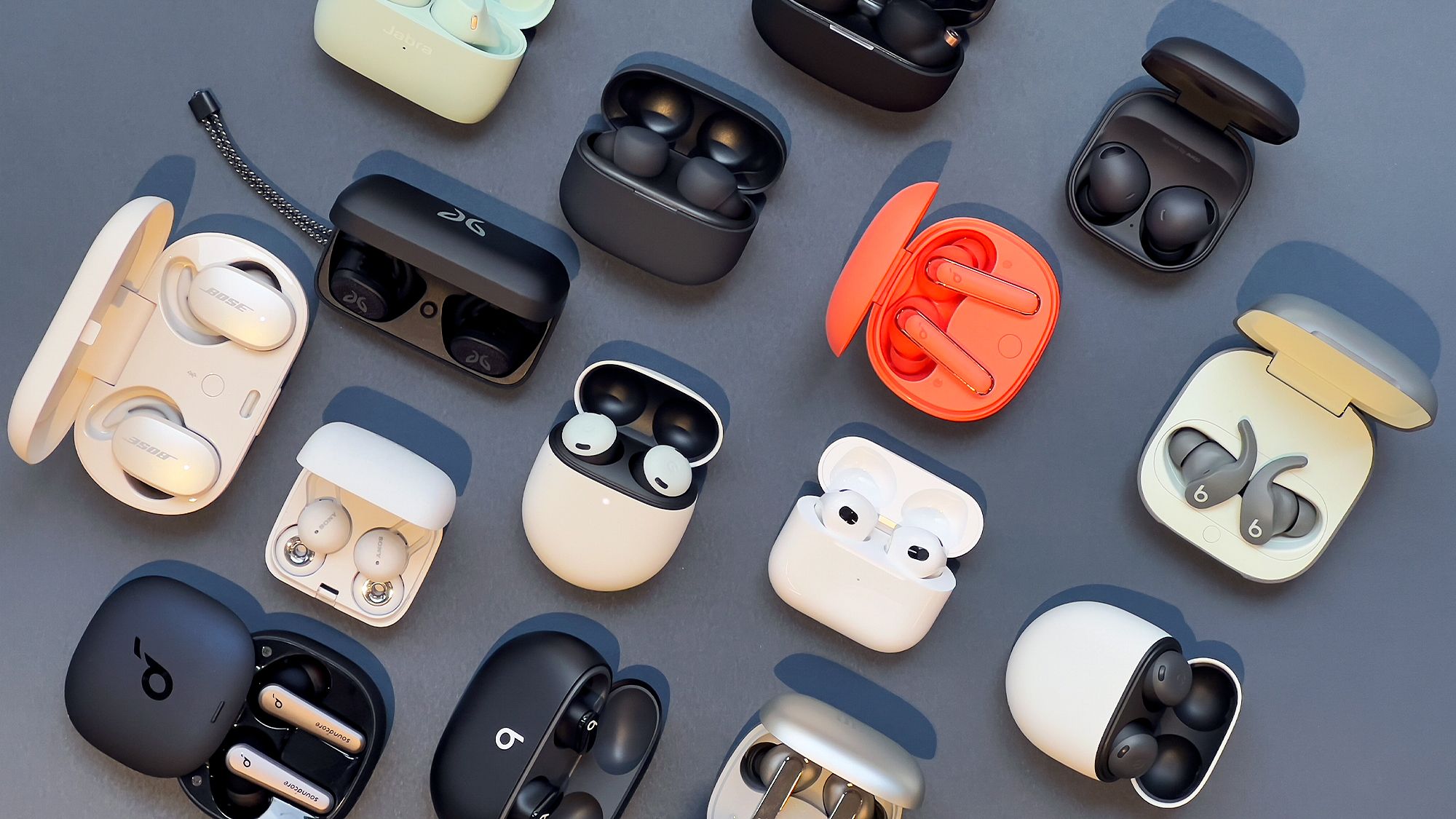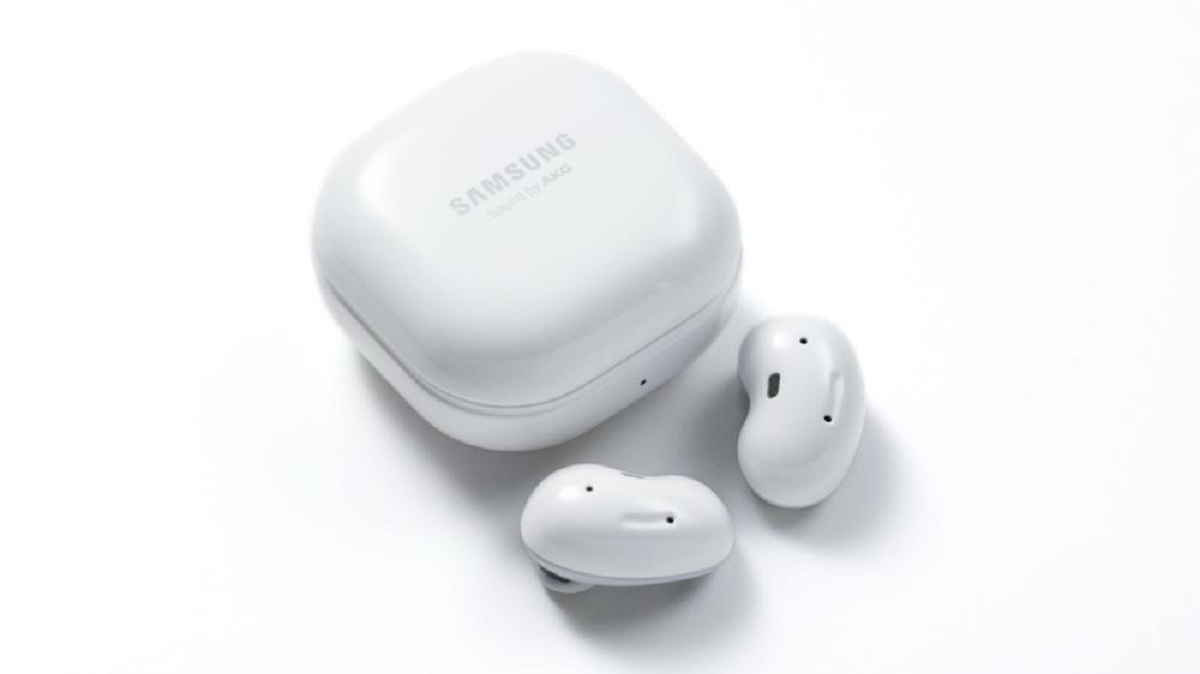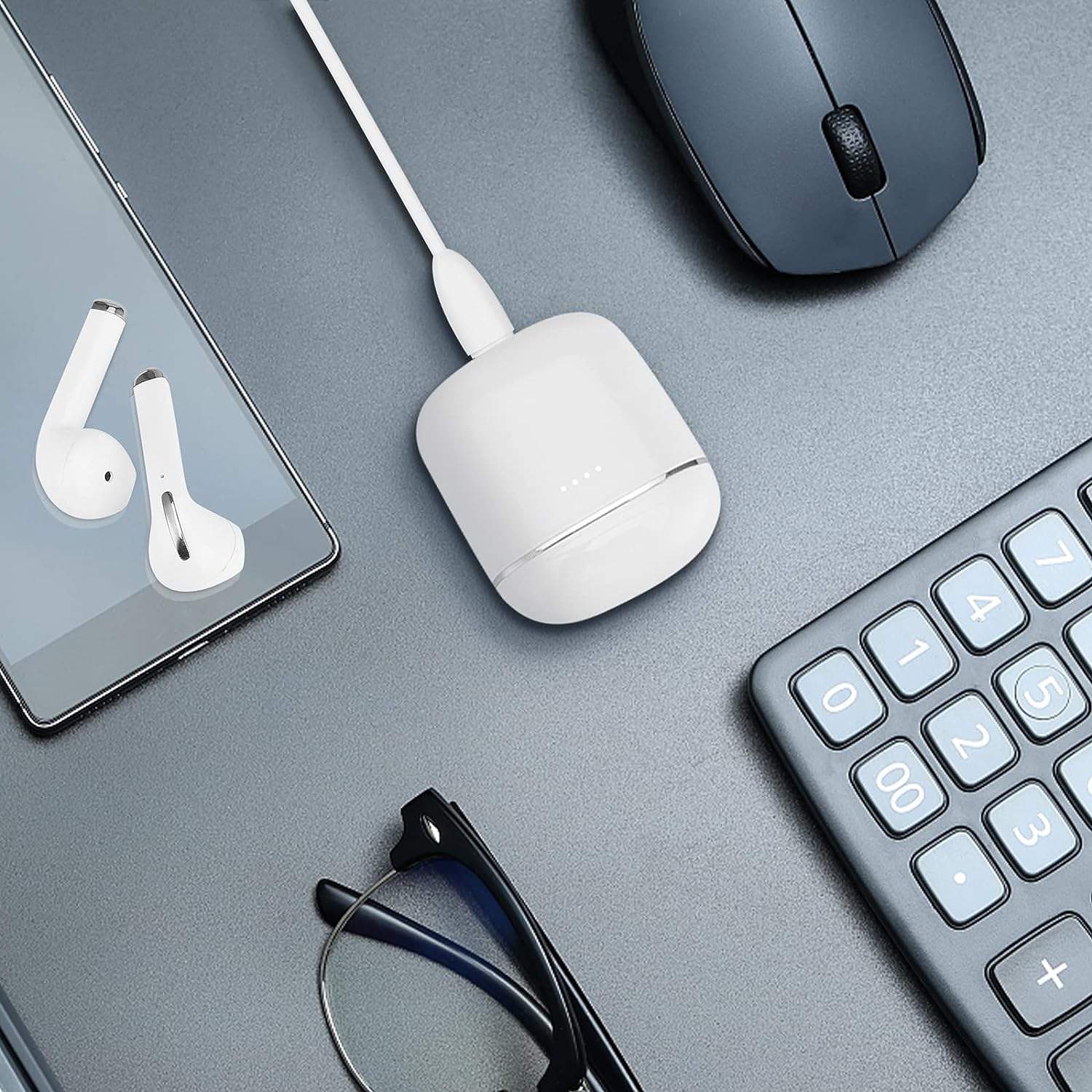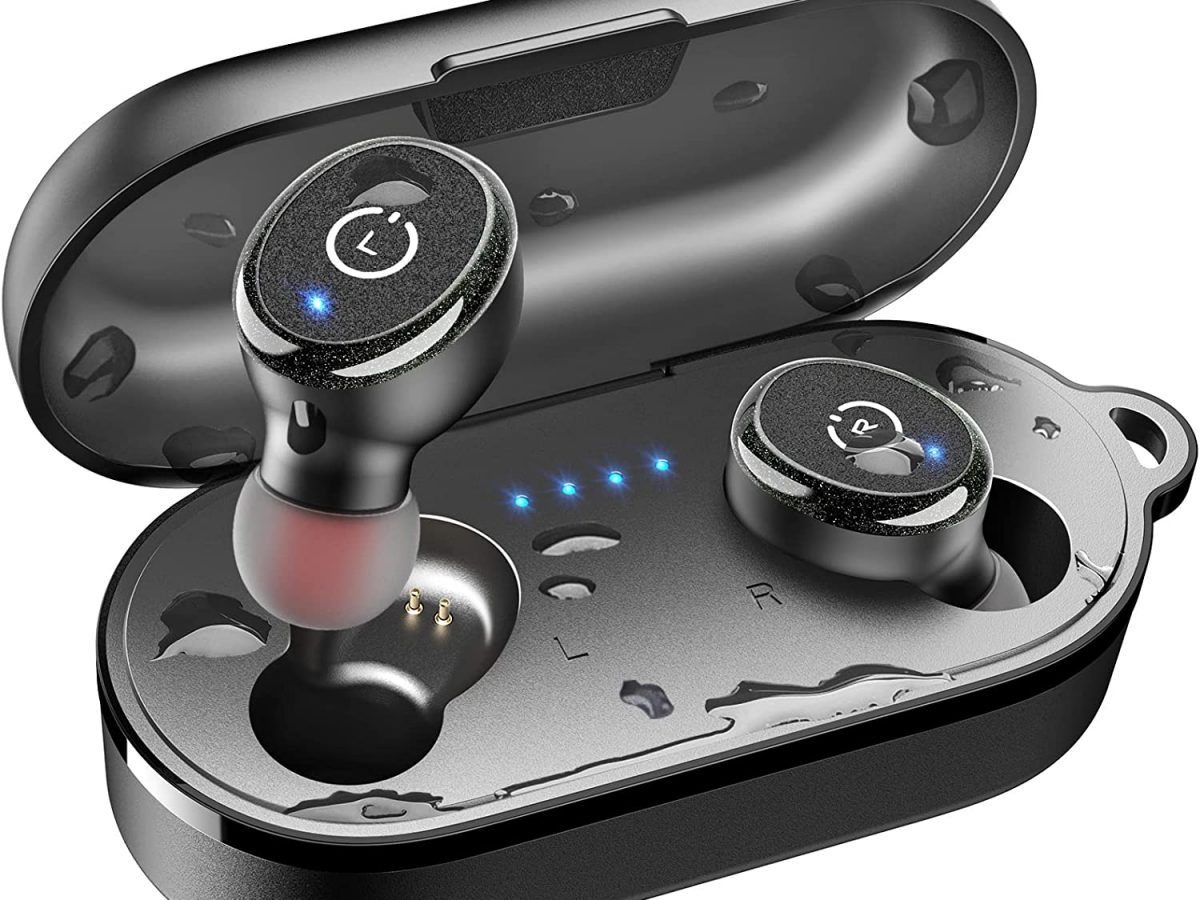Introduction
Wireless earbuds have become increasingly popular due to their convenience and ease of use. However, it can be frustrating when only one earbud is working while the other remains silent. This issue can hinder your audio experience and leave you wondering why it’s happening. In this article, we will explore the possible reasons why only one of your wireless earbuds is working and provide solutions to help you resolve the problem.
It’s important to note that the causes of this issue can vary depending on the specific model of wireless earbuds you own. However, there are some common factors that may contribute to this problem. By understanding these factors, you can troubleshoot and potentially solve the issue on your own.
In the following sections, we will delve into different reasons why only one of your wireless earbuds is working. We will discuss issues such as Bluetooth connectivity problems, battery drain, unbalanced audio channels, earbud hardware malfunction, charging problems, audio source compatibility, and software or firmware issues. By examining each of these factors, we hope to provide you with valuable insights and practical solutions to address the issue effectively.
Before jumping into the details, it’s worth mentioning that the troubleshooting steps may vary depending on the make and model of your wireless earbuds. It is always recommended to refer to the user manual or contact the manufacturer for specific guidance. With that said, let’s begin exploring the potential causes and solutions for the problem of only one of your wireless earbuds working.
Possible reasons why only one wireless earbud is working
When you encounter the issue of only one wireless earbud working, there can be several possible reasons behind it. Understanding these reasons can help you troubleshoot and resolve the problem. Here are some common factors to consider:
- Bluetooth Connectivity Issues: One of the most common causes for only one earbud working is Bluetooth connectivity problems. Ensure that your earbuds are properly paired with your device and that they are within the Bluetooth range. Additionally, check for any interference from other devices or obstacles that may obstruct the signal.
- Battery Drain: If one earbud is not working, it could be due to battery drain. Check the battery levels of both earbuds, and make sure they are sufficiently charged. If one earbud has significantly lower battery life, it may affect its functionality.
- Audio Channels Unbalanced: Another possibility is that the audio channels are unbalanced. Some earbuds may have settings that allow you to adjust the volume independently for each earbud. Ensure that the balance is set correctly to have equal sound output from both earbuds.
- Earbud Hardware Malfunction: Hardware malfunctions can occur in any electronic device, including wireless earbuds. It’s possible that a faulty component or wiring issue is causing one earbud to not work. In such cases, contacting the manufacturer or seeking professional repair might be necessary.
- Charging Problems: In some instances, charging problems can lead to issues with the functionality of wireless earbuds. Check if both earbuds are properly seated and charging when placed in the charging case. If not, clean the charging contacts and ensure a secure connection between the earbuds and the case.
- Audio Source Compatibility: The audio source you are using may not be fully compatible with your wireless earbuds, resulting in one earbud not working. Ensure that the device you are connecting to supports the Bluetooth version of your earbuds and is compatible with stereo audio output.
- Software or Firmware Issues: Occasionally, software or firmware glitches can cause one earbud to stop working. Updating the firmware of your earbuds or resetting them to factory settings might help resolve the issue. Check the manufacturer’s website for firmware updates or refer to the user manual for reset instructions.
These are some of the possible reasons why only one wireless earbud is working. By identifying the root cause, you can take the appropriate steps to troubleshoot and rectify the issue. However, if you are unsure or unable to resolve the problem on your own, it is recommended to contact the manufacturer or seek professional assistance for further guidance.
Bluetooth Connectivity Issues
One common reason why only one wireless earbud is working is due to Bluetooth connectivity issues. Bluetooth technology allows wireless devices to communicate and transmit audio signals, but there can be occasional disruptions or interference that affect the connection. Here are some factors to consider:
- Paired properly: Ensure that your wireless earbuds are properly paired with your device. Verify that you have completed the pairing process correctly, following the instructions provided by the manufacturer. If needed, unpair and pair the earbuds again to establish a fresh connection.
- Bluetooth range: Check the distance between your earbuds and the audio source. Bluetooth typically has a range of up to 30 feet (10 meters), but this can be affected by obstacles such as walls or interference from other electronic devices. Move closer to the audio source to see if it resolves the issue.
- Interference: Other Bluetooth devices or wireless signals in the vicinity can interfere with the connection between your earbuds and the audio source. Turn off or move away from other devices that may be causing interference, such as Wi-Fi routers, cordless phones, or microwave ovens.
- Restart devices: Sometimes, a simple restart can help resolve connectivity issues. Turn off both your earbuds and the audio source, then turn them back on and try reconnecting. This can help refresh the Bluetooth connection and establish a stable link.
- Update firmware: Check if there are any firmware updates available for your earbuds. Manufacturers often release updates to improve connectivity and address known issues. Visit the manufacturer’s website or refer to the user manual for instructions on how to update the firmware.
By troubleshooting Bluetooth connectivity issues, you can potentially resolve the problem of only one wireless earbud working. Remember to consult the user manual or contact the manufacturer for specific guidance related to your earbud model. If the issue persists, proceed to explore the other possible reasons we will discuss in the following sections.
Battery Drain
Another possible reason why only one wireless earbud is working is related to battery drain. Wireless earbuds rely on battery power to function, and if one earbud has significantly lower battery life or is completely drained, it can result in one earbud not working. Here are some factors to consider when addressing battery drain:
- Check battery levels: Verify the battery levels of both earbuds. Most wireless earbuds have LED indicators or a companion mobile app that displays the battery status. If one earbud is running low on power, it may affect its functionality, causing it to stop working or provide limited audio output.
- Recharge both earbuds: Place both earbuds in their charging case and ensure they are properly seated to initiate charging. Make sure the charging case is adequately charged as well. Sometimes, simply recharging the earbuds can restore their functionality and resolve the issue of only one working earbud.
- Consider battery calibration: Some wireless earbuds require periodic battery calibration to ensure accurate battery level readings and optimal performance. Refer to the user manual or the manufacturer’s website for instructions on how to calibrate the battery of your specific earbud model.
- Replace or recharge the earbud individually: If one earbud consistently has lower battery life than the other, it may be a sign of a faulty battery. Contact the manufacturer for troubleshooting assistance or consider replacing the malfunctioning earbud if it’s still under warranty. In some cases, you may be able to purchase individual earbuds to replace the faulty one.
- Maximize battery life: To prevent future battery drain issues, follow practices that can help maximize the battery life of your wireless earbuds. This includes avoiding extended periods of inactivity, storing them in a cool and dry place, and not exposing them to extreme temperatures or direct sunlight.
By monitoring and managing the battery levels of your wireless earbuds, you can minimize the occurrence of only one earbud working while the other remains silent. If the battery drain issue persists, it may be necessary to explore other potential causes, which we will discuss in the following sections.
Audio Channels Unbalanced
Audio channel imbalance can be another reason why only one wireless earbud is working. Some wireless earbuds allow you to adjust the volume independently for each earbud, and if the balance is set incorrectly, it can result in one earbud not producing any sound or having significantly lower volume. Here are some steps to correct audio channel imbalance:
- Check audio balance settings: Ensure that the audio balance settings on your device are properly adjusted. Depending on your device and operating system, there may be options to balance the audio output between the left and right channels. Make sure the balance is centred or adjusted according to your preference.
- Test with different audio sources: Connect your wireless earbuds to different audio sources, such as a smartphone, tablet, or computer, and play audio files or streaming content. This will help determine if the audio channel imbalance is specific to a particular device or if it persists across different sources.
- Listen for audio cues: Pay attention to any audio cues while using both earbuds. Some wireless earbuds emit tones or voice prompts when they are successfully paired, indicating balanced audio channels. If you do not hear these cues, it may indicate a balance issue.
- Adjust balance settings on the earbuds: Certain models of wireless earbuds offer specific controls or companion apps that allow you to adjust the audio balance directly on the earbuds. Consult the user manual or the manufacturer’s website for instructions on how to make balance adjustments.
- Clean or inspect the earbuds: Sometimes, debris or dirt accumulation in the earbud’s audio output can affect sound quality and perceived balance. Inspect the earbuds for any obstruction and clean them carefully using a soft, lint-free cloth or a specialized cleaning tool, if provided by the manufacturer.
By ensuring the proper balance of audio channels, you can resolve the issue of one wireless earbud not working or producing sound at a lower volume. If the problem persists or the audio channel imbalance seems to be inherent to the specific earbud model, consider reaching out to the manufacturer’s customer support for further assistance.
Earbud Hardware Malfunction
If you have tried troubleshooting Bluetooth connectivity issues, checked for battery drain, and adjusted the audio balance with no success, it’s possible that there is a hardware malfunction with the problematic wireless earbud. Here are some signs and steps to address earbud hardware malfunctions:
- Identify the malfunctioning earbud: Determine which earbud is causing the issue. Test both earbuds individually by connecting them one at a time to your device. If only one earbud consistently fails to work or produces distorted sound, it indicates a hardware malfunction with that specific earbud.
- Inspect for physical damage: Examine the malfunctioning earbud for any visible physical damage, such as loose or disconnected wires, cracks, or water damage. If you detect any damage, it could be the cause of the hardware malfunction. In such cases, it’s best to contact the manufacturer or seek professional repair services.
- Contact the manufacturer: If your earbuds are still under warranty, reach out to the manufacturer’s customer support for assistance. They may provide troubleshooting guidance or offer a replacement if the malfunction is covered under the warranty terms. Follow their instructions on how to proceed with the repair or replacement process.
- Consider professional repair: If your earbuds are no longer under warranty or the manufacturer’s support cannot resolve the issue, consider consulting a professional repair service. They have the expertise to diagnose and repair hardware malfunctions in wireless earbuds. Research reputable repair centers or contact local electronics repair shops for assistance.
- Explore replacement options: If the cost of repair is too high or your earbuds are outdated, it might be more cost-effective to consider purchasing a new pair of wireless earbuds. Explore different models and brands to find a suitable replacement that fits your budget and audio requirements.
Hardware malfunctions can be frustrating, but with proper assessment and assistance, you can find a suitable solution. Always refer to the manufacturer’s recommendations and seek professional help when needed to address earbud hardware malfunctions effectively.
Charging Problems
If you find that one of your wireless earbuds is not working, the issue may be related to charging problems. Charging problems can prevent the earbud from powering on or staying powered for an extended period. Here are some steps to troubleshoot and resolve charging-related issues:
- Check the charging case: Ensure that the charging case is functioning properly. Examine the case for any visible damage, loose connections, or debris that might interfere with the charging process. Clean the charging contacts with a soft cloth or a specialized cleaning tool, if provided by the manufacturer.
- Reset the charging case: If the charging case seems to be functioning correctly, try resetting it. This can be done by either pressing a reset button located on the case or removing the earbuds from the case, turning off the case, and then reinserting the earbuds and turning the case back on.
- Inspect the charging pins: Examine the charging pins on both the earbuds and the charging case. Look for any signs of damage or corrosion. If you notice any issues, contact the manufacturer for guidance on how to proceed with cleaning or repairing the charging pins.
- Ensure proper alignment: When placing the earbuds in the charging case, make sure they are properly aligned with the charging contacts inside the case. Improper alignment can prevent the earbuds from charging correctly. Verify that the earbuds are securely seated in the case and that the charging pins make full contact.
- Try a different charging cable or adapter: If you suspect a faulty charging cable or adapter, try using an alternative one. Sometimes, a cable or adapter can become damaged, causing charging issues. Test with a different cable or adapter to determine if the problem lies there.
- Charge from a different power source: If the issue persists, try charging the earbuds from a different power source. Plug the charging cable into a different USB port or use a wall adapter instead of a computer or laptop. This can help rule out any power source-related problems.
By troubleshooting charging problems, you can potentially resolve the issue of one wireless earbud not working. However, if the problem persists even after trying these steps, it may indicate a deeper issue with the earbuds. In such cases, it is advisable to contact the manufacturer’s customer support for further assistance or explore alternative solutions.
Audio Source Compatibility
When facing the issue of only one wireless earbud working, it is worth considering the compatibility of the audio source you are using. Incompatibility between the audio source and your wireless earbuds can lead to one earbud not producing sound or experiencing limited functionality. Here are some factors to consider when addressing audio source compatibility:
- Bluetooth version: Verify that the Bluetooth version of your audio source is compatible with your wireless earbuds. Older audio devices may have outdated Bluetooth versions that are not fully compatible with newer earbuds. Check the specifications of both your earbuds and the audio source to ensure compatibility.
- Stereo versus mono output: Some audio sources, such as certain telephone systems or mono-centric devices, may only output audio in mono mode. As a result, only one earbud will be able to produce sound. Check the settings of your audio source or consult the user manual to verify if it supports stereo audio output.
- Codec support: Different wireless earbuds and audio sources support various audio codecs, such as SBC, AAC, or aptX. Ensure that both your earbuds and the audio source support the same codec. Using a different codec may result in one earbud not functioning or a degradation in audio quality.
- Test with multiple devices: Connect your wireless earbuds to different audio sources, such as smartphones, tablets, or computers, and check if the issue persists across multiple devices. This will help determine if the problem is specific to a particular audio source or if it occurs universally.
- Update audio source firmware: In some cases, the firmware of your audio source may need to be updated to ensure compatibility with your wireless earbuds. Check the manufacturer’s website for any available updates or consult the user manual for instructions on how to update the firmware.
By considering audio source compatibility, you can troubleshoot and potentially resolve the issue of only one earbud working. If the problem persists despite taking these steps, it may indicate a different cause, and it’s recommended to explore the other possibilities outlined in this article.
Software or Firmware Issues
Software or firmware problems can contribute to the issue of only one wireless earbud working. Glitches, bugs, or outdated software versions can affect the functionality of your earbuds. Here are some steps to address software or firmware-related issues:
- Update earbud firmware: Check if there are any firmware updates available for your wireless earbuds. Manufacturers often release updates to address software bugs, improve performance, or add new features. Visit the manufacturer’s website or refer to the user manual for instructions on how to update the firmware of your earbuds.
- Reset earbuds: Perform a reset of your earbuds to restore them to their default settings. This can help resolve software or firmware glitches. Refer to the user manual or contact the manufacturer’s support for instructions on how to reset your specific earbud model.
- Clear Bluetooth cache: If you are experiencing connectivity issues or audio disruptions, clearing the Bluetooth cache on your device might help. Go to the Bluetooth settings, locate your earbuds in the paired devices list, and select the option to “forget” or “unpair” them. Then, re-pair the earbuds and check if the issue is resolved.
- Try different audio apps or platforms: Test your earbuds with different audio apps or platforms to determine if the issue lies with a specific software application. Sometimes, certain apps may not be fully compatible with your earbuds or have settings that interfere with their functionality.
- Reinstall audio-related apps: If the problem persists with specific audio apps, try uninstalling and reinstalling them. This can help resolve any potential software conflicts or corrupted files that might be causing the issue.
- Contact manufacturer support: If the software or firmware issues persist despite attempting the above steps, reach out to the manufacturer’s customer support for further assistance. They can provide specific troubleshooting steps or guide you through additional measures to resolve the problem.
By addressing software or firmware issues, you can potentially regain full functionality of your wireless earbuds. Always refer to the manufacturer’s recommendations and seek assistance from their support channels for specific guidance related to your earbud model.
Conclusion
Experiencing the problem of only one wireless earbud working can be frustrating, but by understanding the possible reasons behind it and following the appropriate troubleshooting steps, you can resolve the issue and regain the optimal audio experience. In this article, we explored various factors that could contribute to this problem.
We discussed Bluetooth connectivity issues and emphasized the importance of proper pairing, checking the Bluetooth range, and addressing any interference or device compatibility concerns. We also highlighted the significance of battery management, including checking the battery levels, recharging both earbuds, and considering battery calibration.
Furthermore, we covered the importance of balancing the audio channels and adjusting the settings on both the earbuds and the audio source. We also addressed the possibility of hardware malfunctions, emphasizing the need to inspect for physical damage and contact the manufacturer for support or seek professional repair if necessary.
Additionally, we emphasized the importance of troubleshooting charging problems and ensuring proper alignment when placing the earbuds in the charging case. We also discussed the significance of audio source compatibility, including checking Bluetooth versions, verifying stereo versus mono output, and testing with multiple devices.
Lastly, we highlighted the potential impact of software or firmware issues, such as outdated or glitchy software, and provided steps to update firmware, perform resets, and address software conflicts or corrupted files.
By considering these potential causes and following the troubleshooting steps outlined in this article, you can overcome the issue of one wireless earbud not working effectively. If the problem persists or if you are unsure about any steps, it is always recommended to refer to the user manual, contact the manufacturer’s support, or seek professional assistance to resolve the issue.
Remember, each wireless earbud model may have its own specific troubleshooting processes and solutions, so it’s essential to consult the documentation provided by the manufacturer. With the right approach, you can enjoy your wireless earbuds to their fullest potential and immerse yourself in high-quality audio.







